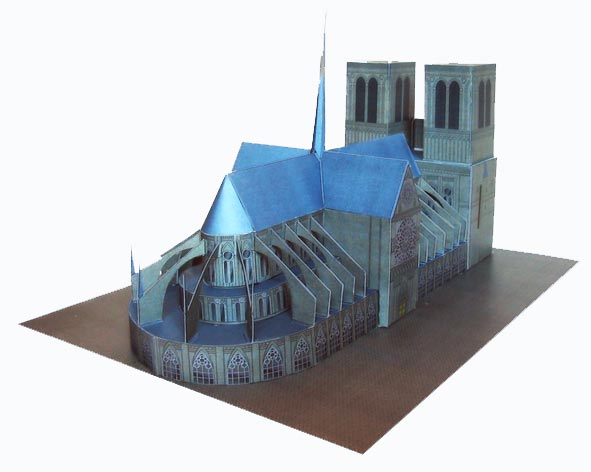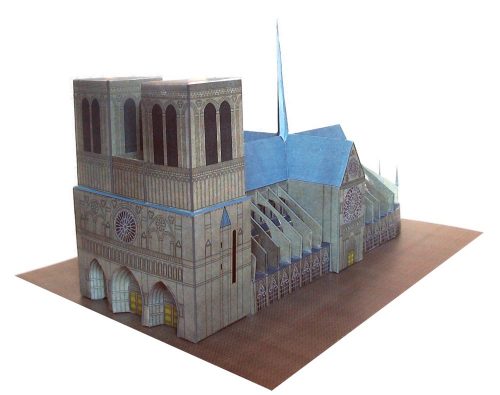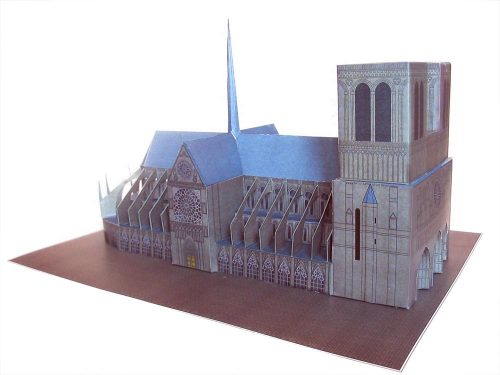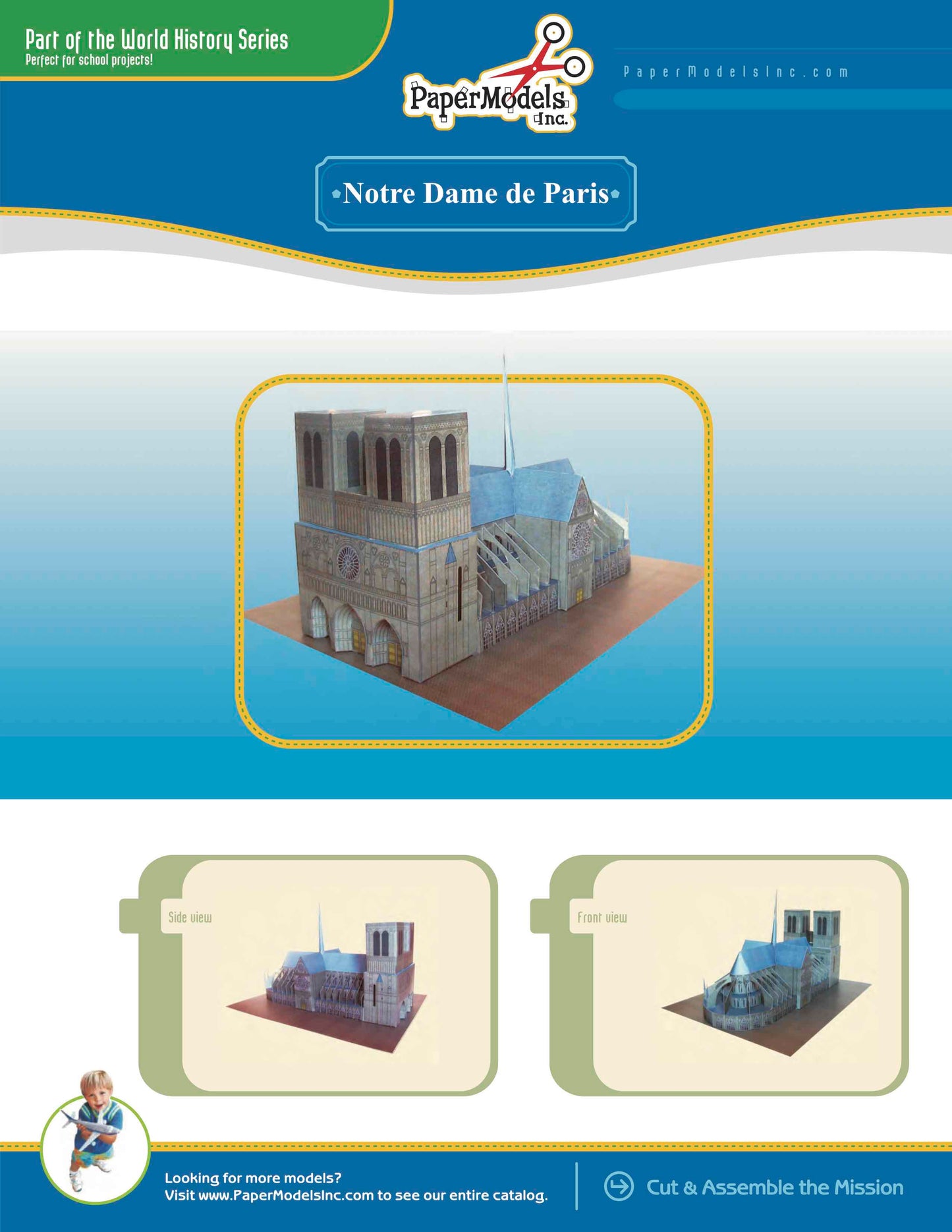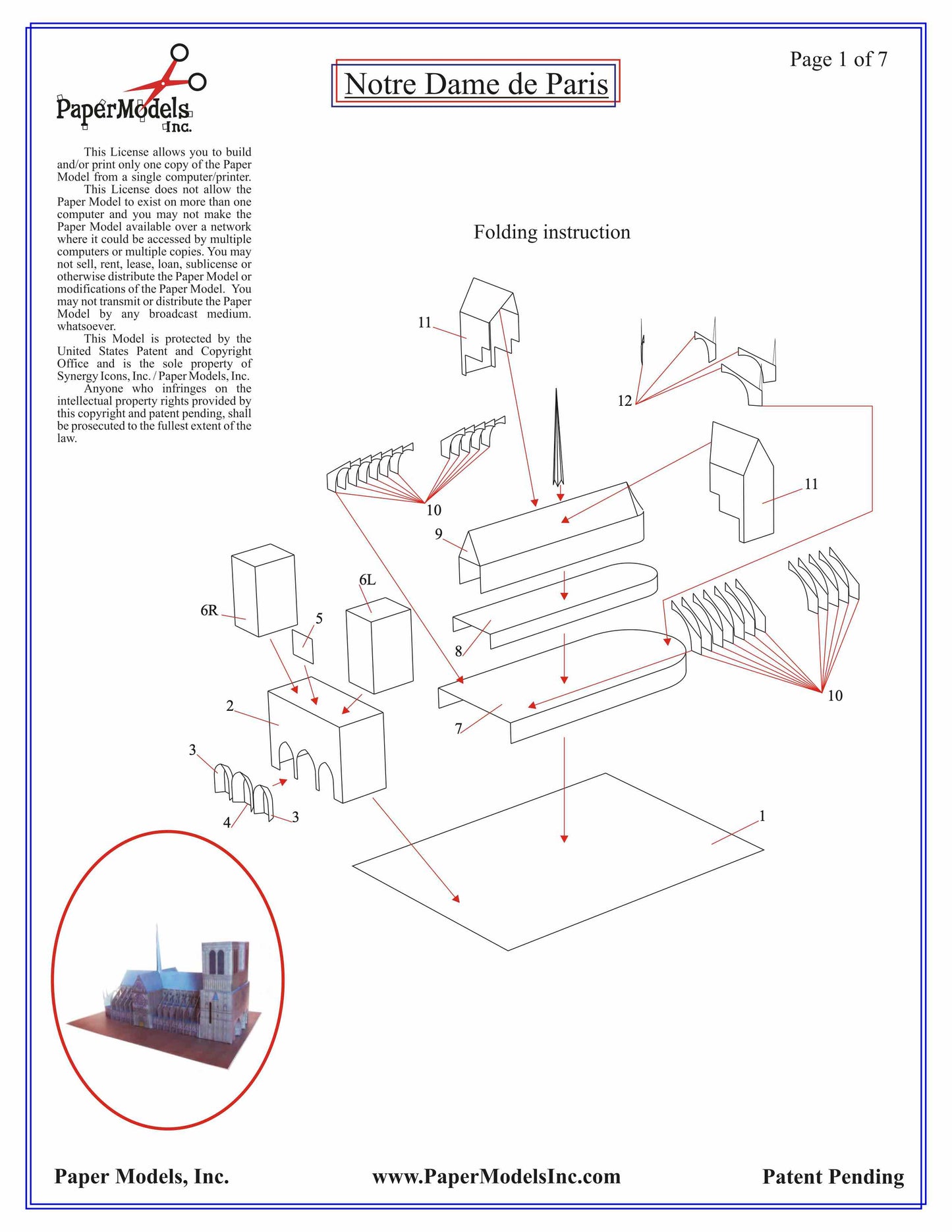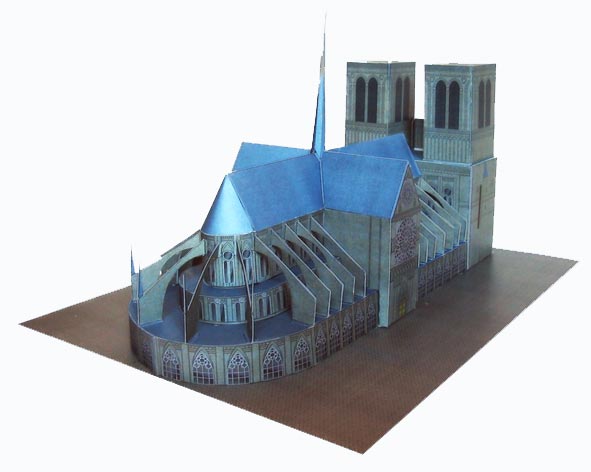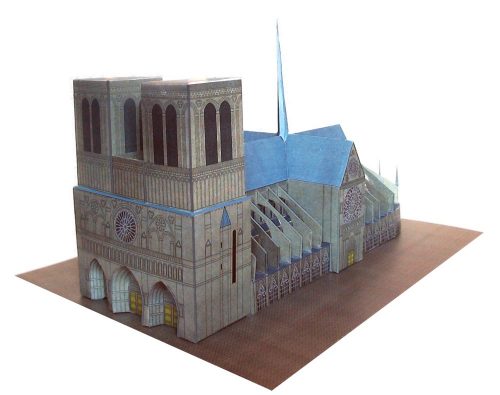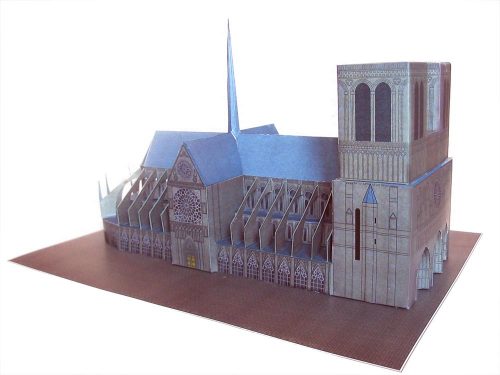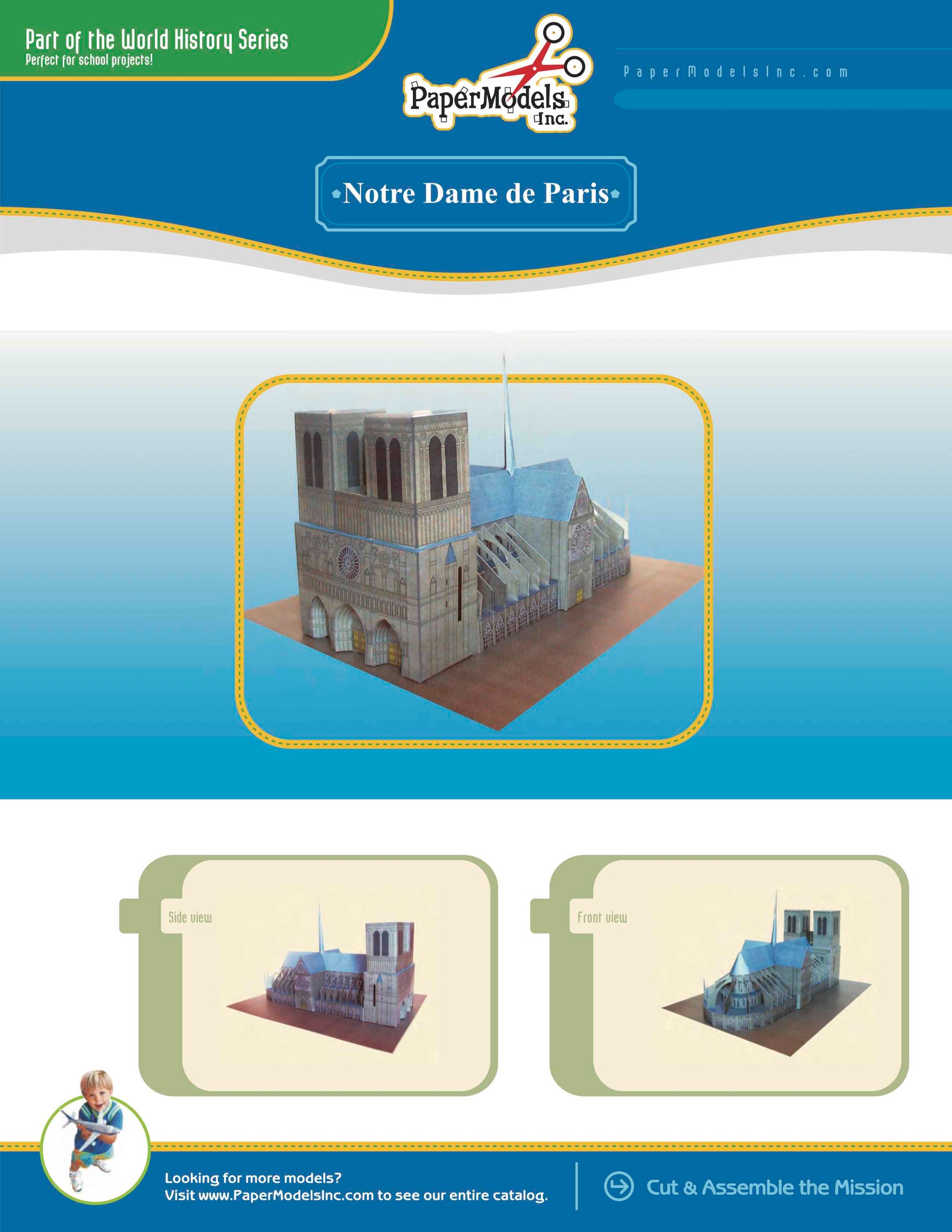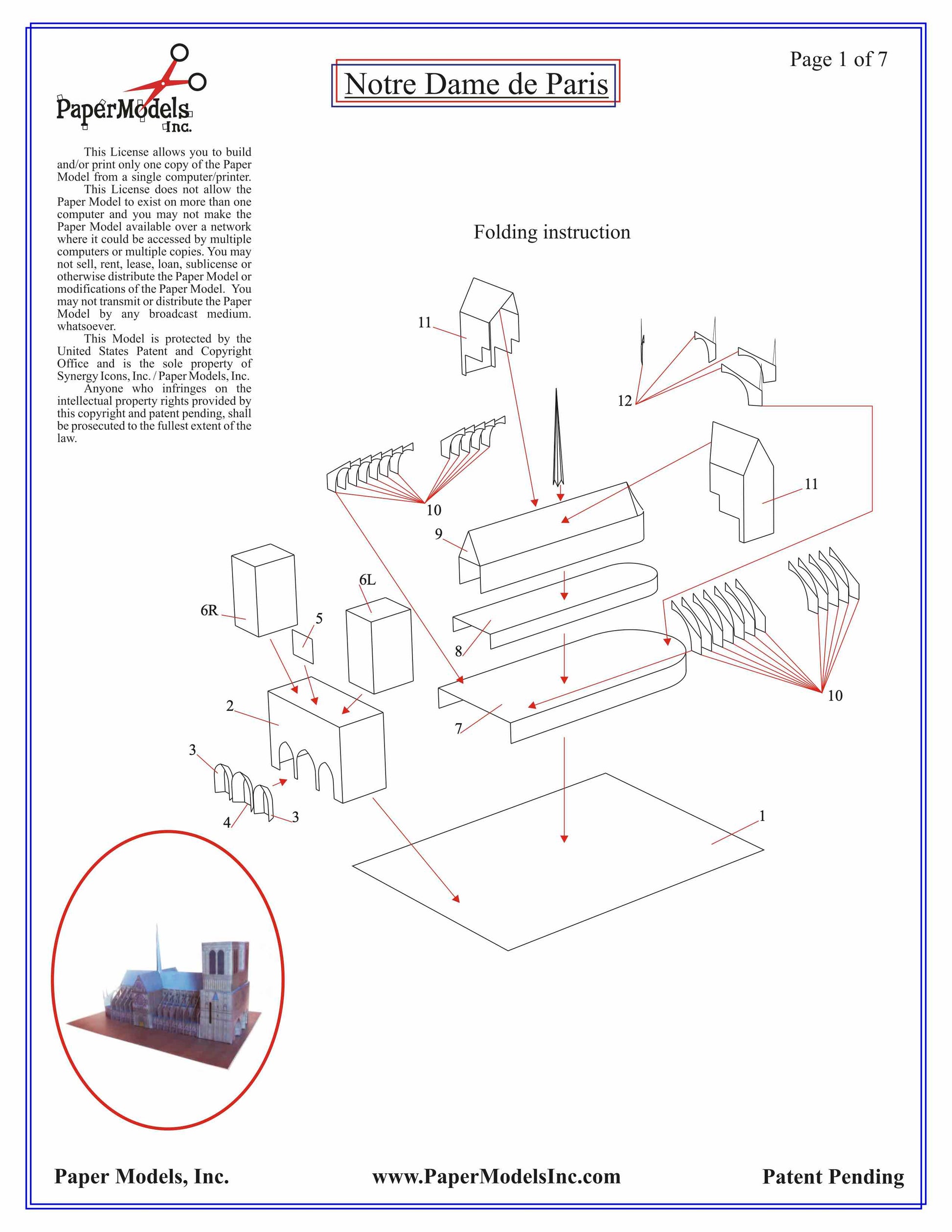Notre Dame Cathedral - Paris - Paper Model Project Kit
Notre Dame Cathedral - Paris - Paper Model Project Kit
Couldn't load pickup availability
🌟 Welcome to Paper Models Online – Your Shortcut to Academic Excellence! 🌟
Are you tired of stressing over last-minute school projects? Look no further! Paper Models Online is here to make your academic life a breeze.
🚀 Why Choose Us?
At Paper Models Online, we understand the pressure of looming deadlines and the desire for that coveted "A" grade. That's why we've crafted the perfect solution for you! Whether you're a student aiming for extra credit, a parent looking for quality time with your kids, or just someone in need of a break from the chaos, our paper models are your ticket to success!
💻 Instant PDF Download OR Pre-Printed & Shipped
You're in control! Choose from our instant PDF download, starting at just $9.95 for the 7"x10" size or $11.95 for the 10"x13" size.
Print it on your home or office printer using regular paper, or opt for the hassle-free pre-printed option. We'll ship it directly to your doorstep for a flat $5 fee via USPS First-Class Parcel, ensuring you get it in 1-3 days!
✂️ Easy Assembly, Maximum Impact
With just a pair of scissors, some glue, and an hour of your time, you can turn these paper sheets into stunning three-dimensional architectural replicas or complete science projects. The images on our website are real models made from our kits, and we even provide a history to help you craft an impressive report.
🎨 Unleash Your Creativity
Not into mission kits? No worries! Our models double as templates for your creative genius. Paint, trace, adjust sizes—your imagination is the only limit! Create a custom masterpiece that reflects your unique style and personality.
🛒 The Buying Process Made Simple
- Choose Your Size: 7"x10" or 10"x13"
- Choose Your Delivery: Instant PDF download or pre-printed and shipped
- Purchase Your Model: It's that easy!

📦 Typical Kit Sample
Each kit includes 8 to 18 pages, providing everything you need to bring the model to life. An "exploded view" guides you through assembly, and a complimentary history adds that extra touch for your report. Impress your teacher not just with creativity but also with your research skills!
Don't let deadlines stress you out. Choose Paper Models Online for your next school project, and let us be Your Best Way To Get An "A"! 🌟
 |
 |
 |
| Exploded View | Sample Pieces | Finished Model |
Free History For Your Report
Notre Dame
Construction on Notre Dame de Paris began in the year 1163 under the reign of Louis VII. Construction was completed roughly 200 years later in 1345. The Cathedral is located on the eastern half of the Île de la Cité in Paris, France, with its main entrance to the west. Maurice de Sully, bishop of Paris, was the architect and decided to build the cathedral for the expanding population. In French the name means “Our Lady of Paris”, meaning the church in Paris dedicated to the Virgin Mary. The Gallo-Roman temple to Jupiter, a Christian basilica, and a Romanesque church (in that order, the last being the most recent) previously occupied the site on which Notre Dame sits today.
With the towers of the Western Façade standing at 228 feet tall, Notre Dame was the first cathedral built on such a monumental scale and its’ French Gothic Style set the precedent for future French Cathedrals. Notre Dame de Paris was among the first buildings in the world to use the flying buttress. Although the flying buttresses were not originally included in the design, they were added around the choir and nave to prevent further deterioration when stress fractures in the thinner walls began to occur as the walls were built higher and pushed outward.
During its history, Notre Dame has been the site of numerous official and other ceremonial occasions. These include:
- 1239; The Crown of Thorns placed in the Cathedral by St. Louis during the construction of Sainte- Chapelle.
- 1302; Philip the Fair opens the first States General here.
- 1430; Henri VI of England is crowned here.
- Mary Stuart becomes Queen of France after her marriage to François II, and is crowned here.
- 1572; Marguerite of Valoi is married to the Huguenot Henri of Navarre here.
- 2 December 1804; After the anointing by Pius VII, Napoléon seizes the crown from the pontiffand crowns first himself, then Josephine.
- 26 August 1944; The Te Deum Mass celebrates the liberation of Paris. (According to someaccounts the Mass was interrupted by snipping from both the internal and external galleries.)
- 12 November 1970; The Requiem Mass of General de Gaulle is held here.
- 31 May 1980; After the Magnificat of this day, Pope John Paul II celebrates Mass on the parvis infront of the Cathedral.
During the French Revolution, Notre Dame was pillaged. The statues of the saints that stood above the portals on the west were mistaken for representations of kings and therefore taken down. (Some statues were recovered in the Latin Quarter in the 1970’s.) Many other things were destroyed or looted during that time as well, but the great bells avoided being melted down.
In 1844, Eugène Emmanuel Viollet-le-Duc began his restoration of Notre Dame. For the next 23 years he would reinstate the triforium and small clerestory windows in the eastern bay of the nave and restore the sculpture on the west façade, damaged during the French Revolution. He also combined scientific research with his own creative ideas to design Notre Dame’s spire, a new feature to the building, and the sacristy. Also in the 19th century, Napoleon III’s urban planner, Baron Haussmann, evicted the Parisians living in the houses in the Cathedral’s vicinity and cleared the surrounding land to allow for a better view of the Cathedral.
Although the building itself is fascinating, it is the art of Notre Dame that is awe inspiring. 28 statues representing the monarchs of Judea and Israel stand in the west front. The three portals depict, from left to right, the Last Judgment; the Madonna and Child; St. Anne, the Virgin's mother; and Mary's youth until the birth of Jesus. The interior is brilliant to say the least and has room for as many as 6,000 worshipers. The three rose windows — to the west, north, and south — are masterful, their colors a glory to behold on a sunny day.
A few fun facts about Notre Dame de Paris:
- The bell "Emmanuel" in the South Tower weighs 13 metric tons (over 28,000 pounds). The clapper alone weighs 500 kilograms (about 1,100 pounds).
- It is said that when "Emmanuel" was recast in 1631, women threw their gold and other jewelry into the molten metal, giving the bell its unique, pure F sharp tone.
- The main vault inside the cathedral is 34 metres (112 feet) high.
- 422 steps (that become increasingly narrower) lead to the very top of the Bell Tower.
The Notre Dame Cathedral, one of the world's most famous landmarks, suffered a devastating fire on April 15, 2019. The blaze caused significant damage to the iconic cathedral's roof and spire, as well as its stained-glass windows and interior. The fire took several hours to bring under control, with firefighters working tirelessly to save the structure from total destruction.
In the aftermath of the fire, there was an outpouring of support from around the world, with many people offering their condolences and pledging to help in the rebuilding effort. French President Emmanuel Macron vowed to restore the cathedral to its former glory within five years, and a massive fundraising campaign was launched to support the reconstruction effort.
The reconstruction process has been a long and complex one, with experts and architects working to restore the cathedral's damaged structure while also ensuring that it meets modern safety and building codes. A key part of the process has been the use of 3D scanning technology to create digital models of the damaged structure, which have allowed architects to plan the restoration in great detail.
There have also been many debates about how best to restore the cathedral, with some arguing that it should be rebuilt exactly as it was before the fire, while others have suggested incorporating modern design elements into the reconstruction. Ultimately, it was decided that the cathedral would be restored to its pre-fire state, with some minor changes to improve safety and accessibility.
Despite the challenges, the reconstruction effort has made significant progress, with many of the cathedral's damaged features, including its roof and spire, already restored. While it may be several more years before the cathedral is fully restored, the ongoing effort is a testament to the resilience of the human spirit and the enduring power of this beloved landmark.
© Copyright – Paper Models, Inc. – All Rights Reserved
Share
